BMW iX2 vs VW T-Roc - Differences and prices compared
Costs and Efficiency:
When it comes to price and running costs, the biggest differences usually appear. This is often where you see which car fits your budget better in the long run.
VW T-Roc has a significantly advantage in terms of price – it starts at 26400 £, while the BMW iX2 costs 43100 £. That’s a price difference of around 16676 £.
Engine and Performance:
Power, torque and acceleration say a lot about how a car feels on the road. This is where you see which model delivers more driving dynamics.
When it comes to engine power, the BMW iX2 has a significantly edge – offering 313 HP compared to 150 HP. That’s roughly 163 HP more horsepower.
In acceleration from 0 to 100 km/h, the BMW iX2 is convincingly quicker – completing the sprint in 5.60 s, while the VW T-Roc takes 8.90 s. That’s about 3.30 s faster.
In terms of top speed, the VW T-Roc performs to a small extent better – reaching 212 km/h, while the BMW iX2 tops out at 180 km/h. The difference is around 32 km/h.
There’s also a difference in torque: BMW iX2 pulls significantly stronger with 494 Nm compared to 250 Nm. That’s about 244 Nm difference.
Space and Everyday Use:
Cabin size, boot volume and payload all play a role in everyday practicality. Here, comfort and flexibility make the difference.
Seats: offers more seating capacity – vs .
In curb weight, VW T-Roc is clearly perceptible lighter – 1465 kg compared to 1960 kg. The difference is around 495 kg.
In terms of boot space, the BMW iX2 offers hardly perceptible more room – 525 L compared to 475 L. That’s a difference of about 50 L.
In maximum load capacity, the BMW iX2 performs minimal better – up to 1400 L, which is about 50 L more than the VW T-Roc.
When it comes to payload, VW T-Roc hardly perceptible takes the win – 515 kg compared to 510 kg. That’s a difference of about 5 kg.
Who wins the race?
The BMW iX2 proves to be leaves the rival little chance and therefore becomes our DriveDuel Champion!
BMW iX2 is the better all-rounder in this comparison.
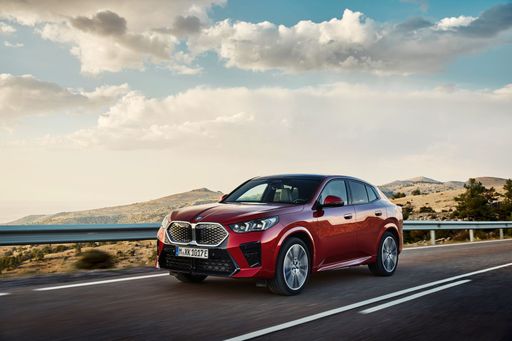 @ BMW Group Press
@ BMW Group Press
BMW iX2
Costs and Consumption
View detailed analysis
Engine and Performance
View detailed analysis
Dimensions and Body
View detailed analysis
BMW iX2
The BMW iX2 cuts a sporty silhouette and delivers the buttoned-up premium feel you expect from the brand, wrapped in a compact electric package that’s easy to live with. It’s a smart pick for buyers who want engaging city driving, clever cabin tech and a touch of eco-conscious flair without giving up the fun behind the wheel.
details @ BMW Group Press
@ BMW Group Press
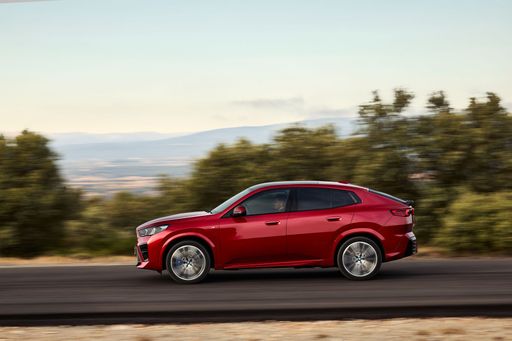 @ BMW Group Press
@ BMW Group Press
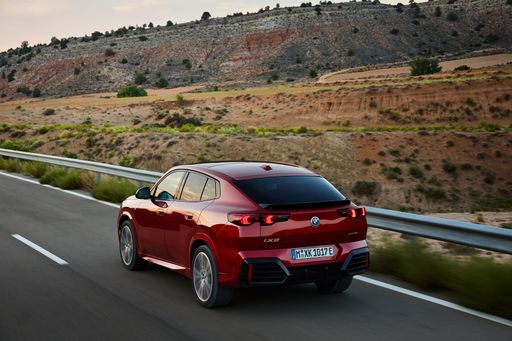 @ BMW Group Press
@ BMW Group Press
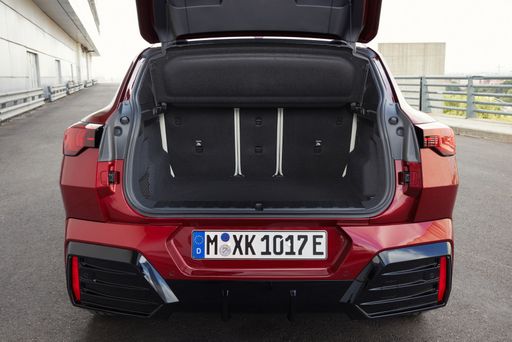 @ BMW Group Press
@ BMW Group Press
VW T-Roc
The VW T-Roc mixes cheeky, coupe-like styling with the everyday sense and space of an SUV, so it looks fun without sacrificing family sense. It’s a likeable all-rounder with tidy road manners and plenty of personality, ideal if you want a car that’s practical enough for chores but entertaining enough to enjoy.
details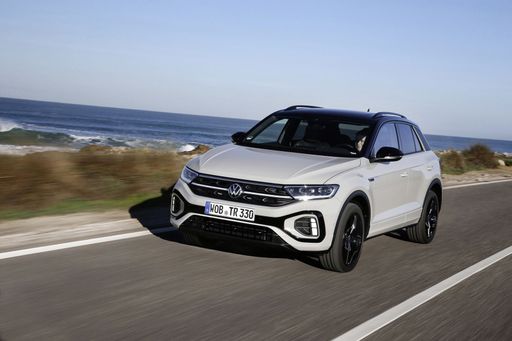 @ Volkswagen AG / VW Media
@ Volkswagen AG / VW Media
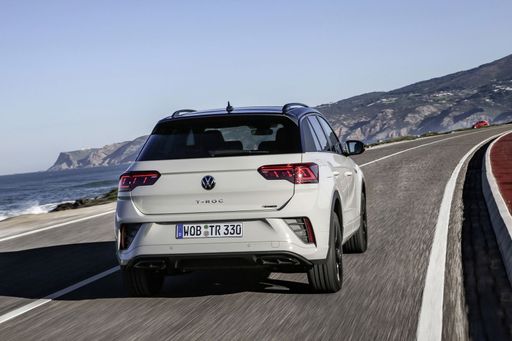 @ Volkswagen AG / VW Media
@ Volkswagen AG / VW Media
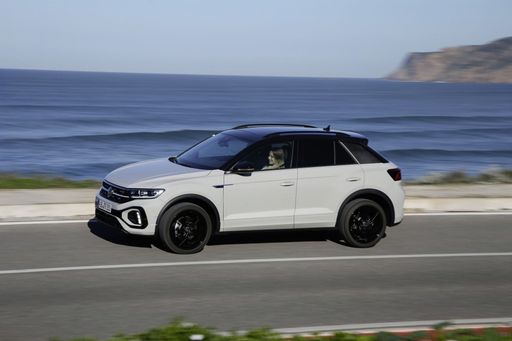 @ Volkswagen AG / VW Media
@ Volkswagen AG / VW Media
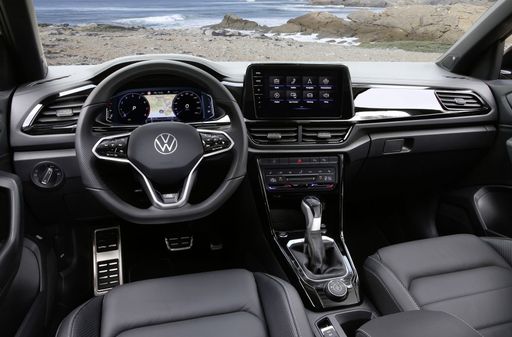 @ Volkswagen AG / VW Media
@ Volkswagen AG / VW Media
 @ BMW Group Press
@ BMW Group Press
|
 @ Volkswagen AG / VW Media
@ Volkswagen AG / VW Media
|
|
|
|
Costs and Consumption |
|
|---|---|
|
Price
43100 - 54800 £
|
Price
26400 - 38000 £
|
|
Consumption L/100km
-
|
Consumption L/100km
5.5 - 6.3 L
|
|
Consumption kWh/100km
15.3 - 16.3 kWh
|
Consumption kWh/100km
-
|
|
Electric Range
449 - 478 km
|
Electric Range
-
|
|
Battery Capacity
64.80 kWh
|
Battery Capacity
-
|
|
co2
0 g/km
|
co2
126 - 143 g/km
|
|
Fuel tank capacity
-
|
Fuel tank capacity
50 L
|
Dimensions and Body |
|
|---|---|
|
Body Type
SUV
|
Body Type
SUV
|
|
Seats
5
|
Seats
4 - 5
|
|
Doors
5
|
Doors
2 - 5
|
|
Curb weight
1960 - 2095 kg
|
Curb weight
1465 - 1539 kg
|
|
Trunk capacity
525 L
|
Trunk capacity
284 - 475 L
|
|
Length
4554 mm
|
Length
4271 - 4373 mm
|
|
Width
1845 mm
|
Width
1811 - 1828 mm
|
|
Height
1560 mm
|
Height
1527 - 1573 mm
|
|
Max trunk capacity
1400 L
|
Max trunk capacity
1350 L
|
|
Payload
500 - 510 kg
|
Payload
368 - 515 kg
|
Engine and Performance |
|
|---|---|
|
Engine Type
Electric
|
Engine Type
Petrol, Petrol MHEV
|
|
Transmission
Automatic
|
Transmission
Manuel, Automatic
|
|
Transmission Detail
Reduction Gearbox
|
Transmission Detail
Manual Gearbox, Dual-Clutch Automatic
|
|
Drive Type
Front-Wheel Drive, All-Wheel Drive
|
Drive Type
Front-Wheel Drive
|
|
Power HP
204 - 313 HP
|
Power HP
115 - 150 HP
|
|
Acceleration 0-100km/h
5.6 - 8.6 s
|
Acceleration 0-100km/h
8.9 - 12.3 s
|
|
Max Speed
170 - 180 km/h
|
Max Speed
187 - 212 km/h
|
|
Torque
250 - 494 Nm
|
Torque
200 - 250 Nm
|
|
Number of Cylinders
-
|
Number of Cylinders
3 - 4
|
|
Power kW
150 - 230 kW
|
Power kW
85 - 110 kW
|
|
Engine capacity
-
|
Engine capacity
999 - 1498 cm3
|
General |
|
|---|---|
|
Model Year
2024
|
Model Year
2024 - 2025
|
|
CO2 Efficiency Class
A
|
CO2 Efficiency Class
E, D
|
|
Brand
BMW
|
Brand
VW
|
What drivetrain options does the BMW iX2 have?
The BMW iX2 is available as Front-Wheel Drive or All-Wheel Drive.
The prices and data displayed are estimates based on German list prices and may vary by country. This information is not legally binding.
